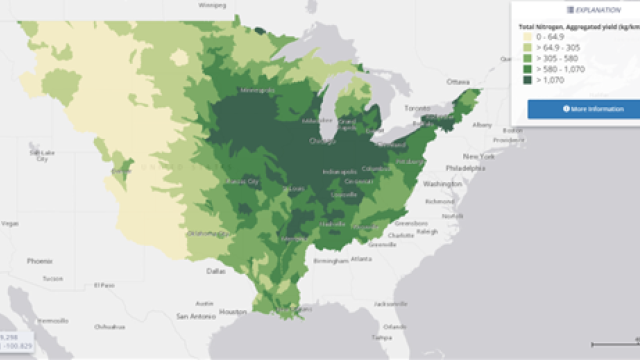Nutrient Pollution
Nutrient pollution is one of the most widespread and challenging environmental problems our nation faces. When too many nutrients—mainly nitrogen and phosphorus—enter our water bodies they cause excessive algal growth which can harm aquatic life and, in many instances, produce toxins that can also harm people and animals. Excess nitrogen in the air can make breathing difficult, cause acid rain, limit visibility and alter plant growth.
-
Basic Information

Learn how and where nutrient pollution occurs, how it can lead to the formation of harmful algal blooms, and other impacts it can have on our health, ecosystems and economy.
-
What You Can Do

We can all take actions to reduce nutrient pollution through daily choices we make in and around our homes, workplaces, classrooms and communities.
-
EPA’s Efforts to Reduce Nutrient Pollution

The EPA continues to work diligently to reduce nutrient pollution in our nation’s waterbodies.
-
Data and Tools to Assist States, Tribes, & Territories

The EPA has collected data and develop tools to better understand, manage, and reduce nutrient pollution in surface and source waters.
-
Learn about Numeric Nutrient Criteria

Water quality criteria for nitrogen and phosphorus help to protect water bodies and restore those that are impaired by nutrient pollution.
-
State Info, Research, Reports & Other Resources

The EPA supports and facilitates access to state progress via a StoryMap, basic and applied research, publications, and resources to help manage nutrient pollution in our nation’s waters.
